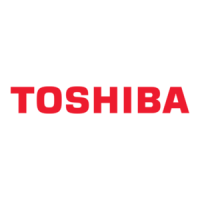How to use the JPEG Conversion Tool
The JPEG Conversion Tool converts JPEG files not supported by the projector, image
files in other formats, Microsoft
®
PowerPoint
®
files, and the like into JPEG files. The JPEG
files converted with this tool can be displayed by saving them on a USB memory device.
Launching the JPEG Conversion Tool
The window shown in the figure to the right appears on the
computer screen.
Drag the Image Quality Settings slider to the left or right to set
the image quality of the file after conversion. Lower values create
smaller files, but will lower the image quality. (It is not possible to
restore the quality of an image once it has been lowered.)
Converting an image file
This takes JPEG files created with compression formats not supported by the projector,
for example Windows
®
metafiles (wmf), and bitmapped files (bmp), and converts into
JPEG files.
(1) In the
Conversion Method field, select Converting image
file. (Status on launch)
(2) In the
File settings field, click the Browse button for Original
Image File Name.
The
Open dialog box appears.
(3) In the
Open dialog box:
(a) Specify the location of the file to be converted; and
(b) In the
Files of Type field, click the button to select the
file format. A list of files of that format appear in the Open
dialog box.
(4) In the
Open dialog box, select the file to convert, then click
the Open button.
(5) In the
JPEG Conversion Tool window, in the File
settings field, select Browse for File name after
conversion. The Save As dialog box appears.
(6) In the
Save As dialog box:
(a) Specify the location in which to save the converted
file;
(b) Enter a file name of up to 8 characters in the
File
Name field; and
(c) Press the
Save button.
(7) (a) In the
JPEG Conversion Tool, click the Conversion
button.
(b) The resolution selection dialog box appears. Select a
desired resolution and click the OK button.
(c) A confirmation dialog box opens. Click
Yes.
The computer converts the file. When it finishes a
message appears informing you that “a JPEG file has
been created”.
Converting files created with Microsoft
®
PowerPoint
®
This process provides presentations without using a computer by converting
presentation files created with Microsoft
®
PowerPoint
®
into JPEG files, storing them on a
USB memory device, and displaying them in a slide show.
To use this conversion mode, Microsoft
®
PowerPoint
®
must be installed on the
computer.
Only static images are supported by this process. Animation and audio are not
supported.
Presentation files created with Microsoft
®
PowerPoint
®
usually
consist of several slides. For this reason, the tool creates a
folder with the name specified in step (5), below, and file for
each slide is created in the folder (starting with slide001.jpg).
(1) In the
Conversion Method field, select Converting PPT file.
(2) In the
File settings field, click the Browse button for PPT
File Name.
The
Open dialog box appears.
(3) In the
Open dialog box:
(a) Specify the location of the file to be converted; and
(b) Select the PowerPoint
®
presentation file to convert,
then click the Open button.
(4) In the
JPEG Conversion Tool window, in the File
settings field, click the Create button for New folder
name.
The
Folder create dialog box appears.
(5) In the
Folder create dialog box, in the Folder Name of
document of document field, specify a folder name of 12
characters or less.
(6) In the
Folder create dialog box, click the Selection button.
The
Browse for Folder dialog box appears.
(7) In the
Browse for Folder dialog box:
(a) Specify the location in which to save the folder; and
(b) Click the
OK button.
(8) In the
Folder create dialog box:
(a) Click the
Create button.
A confirmation dialog box appears;
(b) Click the
OK button.
•
•

